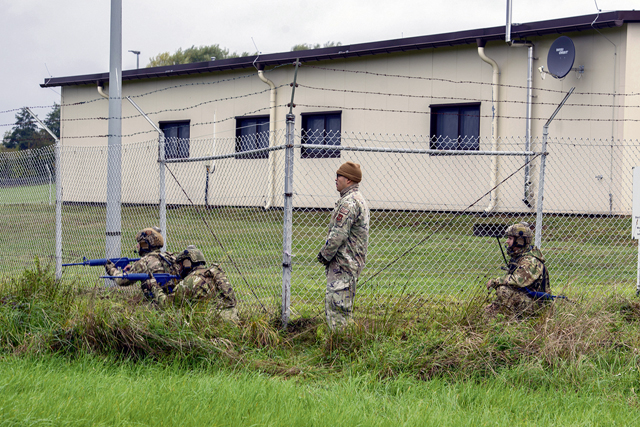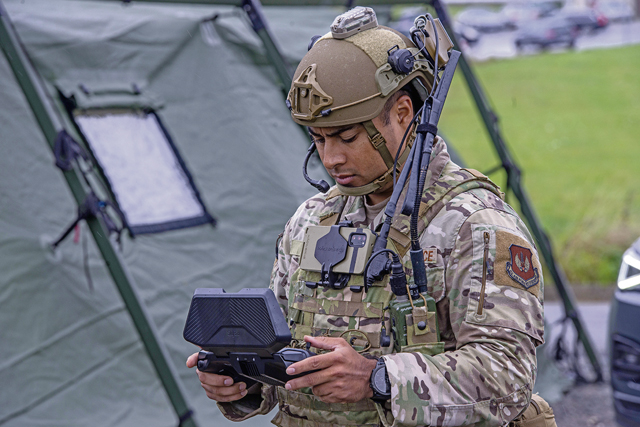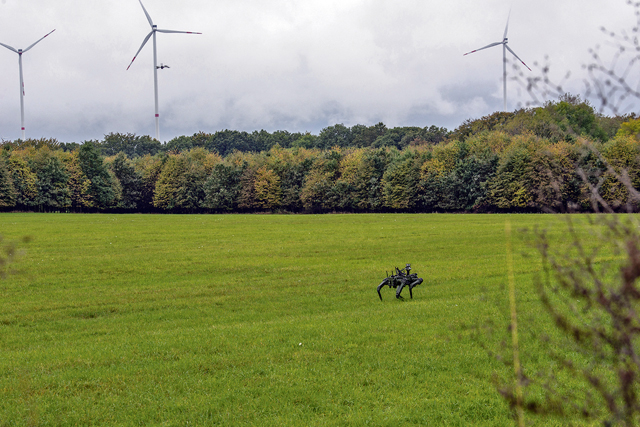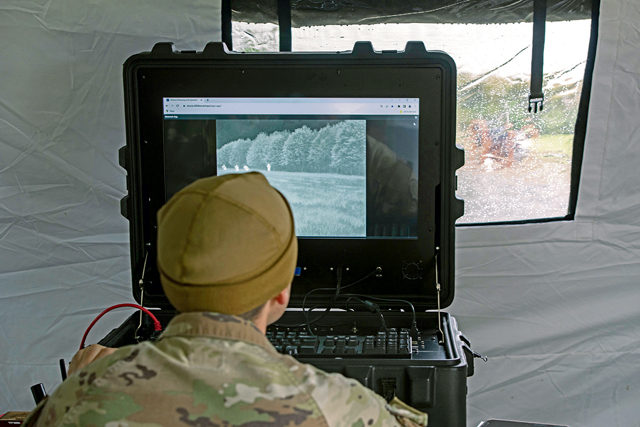
U.S. Air Force Airmen, assigned to the 435th Security Forces Squadron, hosted a technology integration and field demonstration event with contingency response operations at the Polygone Training Compound in Bann, Oct. 20.
The Airmen practiced integration of small unmanned aircraft systems, such as drones, and artificial intelligence by using a robodog to train on field tactics in CR scenarios as a way to refine Intelligence, Surveillance and Reconnaissance skills in dynamic environments and on the modern battlefield.
“CR security forces uses modern day [U.S.] Army and Air Force tactics that we have adapted to today’s battlefield,” said U.S. Air Force Tech. Sgt. Matthew Oiler, 435th SFS CR team chief. “Our mission revolves directly around airfield security in austere and civilian environments.”

One goal for this training is to improve CR operations and strengthen the 435th SFS’ ISR as well as sensor capabilities by using new technologies, Oiler explained.
Training with this new technology implementation also provides security forces Airmen and CR teams the capability to monitor areas, especially airfields, in austere environments without physically sending Airmen in for surveillance.
“Eventually, the implementation of sUAS and AI programs in CR operations will minimize depletion of our manpower at home,” said Tech. Sgt. Thomas Scotti, 435th SFS CR team chief. “Rather than relaying information through traditional communications, AI systems will lessen the workload, so that we only have guns in the fight. It will enable us to be more effective on the battlefield.”

Additionally, the robodog works in environments where chemical, biological, radiological or nuclear agents may have been used, and, unlike other robotic technologies, is able to “feel” the terrain underneath it to continue moving forward. Its battery also allows about three and a half hours of continuous use, and moves at a pace of approximately one meter per second. Another aspect of the Robodog is its thermal camera as well as its red, green and blue cameras that are able to “see” specific targets.
“It’s honestly pretty fun to drive the dogs around,” Scotti said. “I’m feeling a little disbelief. I’m a little bit older, and I definitely never thought I would see something like this in the military. I’ve never seen the military move this quickly before. [It started] with an idea and now we have dogs on the ground.”

Currently, 435th SFS personnel are planning more robodog training events to ensure the connection between the dog and the drone is seamless for future CR missions.
Ultimately, the sUAS and robodog implementation gives new strengths to enhance ISR capabilities, promotes efficiency by protecting resources and manpower, and aids in 435th SFS defenders executing the mission: to secure, protect and defend weapons systems, air base assets, personnel and resources.


